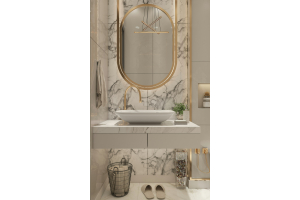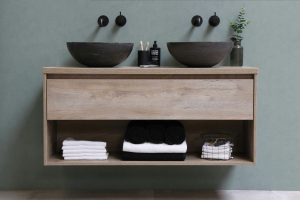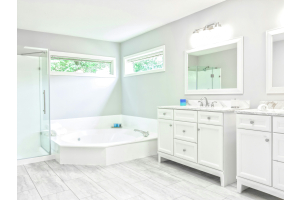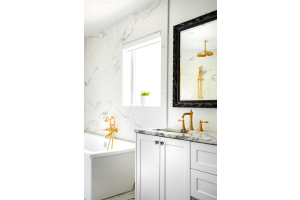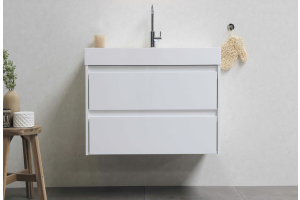Interior design trends dominate for a few years and then fade. In the 1960s and 1970s, faux wood panels made of little more than paperboard was one of those trends.
Today, people's home aesthetic choices come in every flavor imaginable, and one popular style is a rustic look. This style often involves using second-hand wood, distressing surfaces with a sander, and whitewashing wood wall panels.
The Pros and Cons of Whitewashing
Whitewashing a wall means painting it with a very light coat of white paint. The goal is to duplicate the appearance of a white bungalow on a beach that's been weathered over decades.
The Upsides
Whitewashing can infuse character into a space and make it feel lived in; even a new home can feel decades old with whitewashing. It also works great for hiding minor flaws while still allowing the beauty of the wood to shine through.
Whitewashing also uses less paint than a fully painted makeover, leading to lower costs in paint and supplies. It also offers a highly versatile style that is adaptable to a range of spaces.
The Downsides
While it may sound simple on paper, whitewashing isn’t a walk in the park. No one can paint like Bob Ross after watching a single episode, and you shouldn’t expect to whitewash professionally after watching a ten minute YouTube video.
Secondly, if you make mistakes during the whitewashing process, you’ll have a dilemma. You can remove the paint with paint thinner, sand it off and repaint the section, or live with the mistake and hope no one notices. It is very easy to over-paint or under-paint, and getting the right look takes a lot of practice.
DIY Distress: Making Wood Look Weathered
The first step in whitewashing is to take equal parts white paint and water and mix them together. You can also purchase ready-made whitewash paint from certain retailers.
Next, make sure your wood is clean and sanded. If you have faux wood walls, do not sand them, as this will destroy the look of the wood. Once the wood is ready, use a wide paintbrush to apply a single, thin layer of the whitewash mix to the wood.
Let the paint sit for one minute, then gently wipe it with a cloth. Most of the paint will be picked up by the rag, leaving behind the thinnest layer of white paint. Then, you can use a clean paintbrush to gently brush the surface to add authentic-looking brush strokes to the panels.
Just like learning how to paint wood paneling walls with grooves, whitewashing is all about attention to detail. Before you start painting your home, find some scrap wood pieces and practice several times with different techniques. Once you’ve found the right look and are confident in your abilities, you can tackle the real deal.
Take the Effort Out of the Equation
A simpler way of adding that wonderful aged look to your home is to install whitewashed wood wall panels. When it comes to paneling quality, it matters what wall paneling is made of. At 27EStore, our panels are constructed of top-tier high-pressure laminate, or ‘HPL,’ which can come in any style, color, and texture imaginable.
We have several distressed and whitewash styles to choose from. With our easy installation, your home can have the look you’ve been dreaming of in no time at all!

